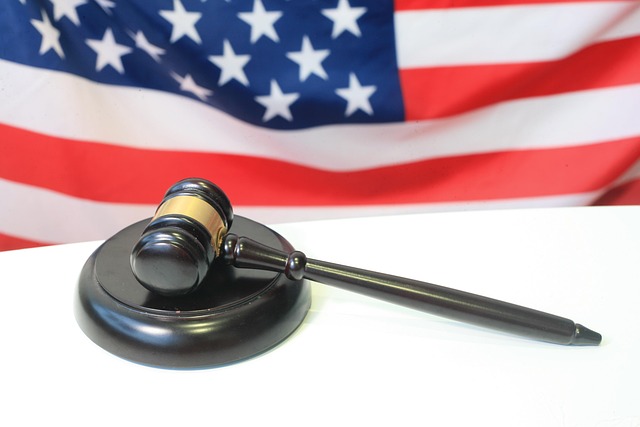The "Burden of Proof" is a pivotal legal concept that heavily influences outcomes in C-Level investigations, particularly regarding criminal charges against executives. This standard, set by criminal law's "beyond a reasonable doubt" threshold, demands substantial evidence to eliminate doubt. In corporate settings, this differs from criminal trials, emphasizing the interpretation of complex data rather than absolute certainty. Misjudging circumstantial evidence can lead to unfair decisions with severe consequences. Understanding the burden of proof is crucial for strategic defense, enabling organizations to navigate legal complexities, avoid indictment, preserve reputations, and ensure fairness in investigations, ultimately fostering corporate integrity.
“In the complex world of corporate investigations, understanding the role of ‘burden of proof’ is a game-changer. This article delves into the intricacies of C-level investigations, exploring how misconceptions about proof can significantly impact outcomes. We dissect the scope and impact of these inquiries, highlighting their legal underpinnings and strategic management.
From real-world case studies to practical strategies, this comprehensive guide reveals the key factors influencing verdicts, offering valuable insights for navigating high-stakes corporate probes.”
- Understanding C-Level Investigations: Uncovering the Scope and Impact
- The Role of Burden of Proof in Legal Proceedings
- How Misconceptions about Proof Can Influence Corporate Inquiries
- Strategies for Effective C-Level Investigation Management
- Case Studies: Real-World Examples of Burden of Proof in High-Level Probes
Understanding C-Level Investigations: Uncovering the Scope and Impact

C-Level investigations refer to high-level inquiries into allegations against senior executives or board members within a corporation. These cases are complex, often involving intricate financial transactions and legal implications. Understanding the scope and impact of such investigations is crucial for both companies and their leaders. The burden of proof plays a significant role in shaping the outcome, dictating whether an individual faces indictment and the potential consequences for the organization.
In corporate investigations, the focus shifts from solely punishing wrongdoers to ensuring justice and maintaining integrity. For corporate and individual clients alike, the goal is to avoid indictment by presenting a robust defense that meets the stringent legal standards required in jury trials. Effective strategies involve meticulous document gathering, witness preparation, and a deep understanding of regulatory frameworks. By employing these tactics, companies can protect their reputation, safeguard their operations, and mitigate potential liabilities while navigating the complexities of these high-stakes investigations.
The Role of Burden of Proof in Legal Proceedings

The Burden of Proof is a fundamental concept in legal proceedings that significantly influences the outcome of cases, particularly at the C-Level where high-stakes investigations are launched. It refers to the obligation on a party to present sufficient evidence to persuade the decision-maker, whether it’s a judge or jury, of the truth of its position. In criminal law, this is often described as proving “beyond a reasonable doubt,” a standard that requires prosecutors to convince the jury that the defendant is guilty without any reasonable alternative explanation. This principle ensures fairness and protects individuals from unfounded accusations.
Understanding how the Burden of Proof affects verdicts is crucial for both plaintiffs and defendants in general criminal defense scenarios, especially during jury trials. Achieving extraordinary results often hinges on understanding and effectively navigating this burden. The strategy employed by legal teams can make or break a case, as it determines the quality and quantity of evidence presented and the manner in which it’s perceived by the decision-makers.
How Misconceptions about Proof Can Influence Corporate Inquiries

Misconceptions about proof can significantly sway the outcome of corporate investigations, especially in high-stakes cases involving complex financial schemes or white-collar crimes. Often, there’s a misconception that absolute certainty is required to prove guilt or innocence. However, in legal terms, the “burden of proof” merely means presenting enough compelling evidence for a reasonable doubt to be dismissed—not necessarily proving it beyond every shadow of doubt. This distinction is crucial in corporate inquiries where, unlike criminal trials, the standard of proof isn’t as stringent.
For instance, while investigating accounting fraud, legal professionals must navigate intricate financial records and interpretations. A corporate client might believe that a single contradictory transaction is enough to clear them, overlooking the broader context or potential for collusion. Similarly, individual clients accused of ethical breaches could misjudge the weight of circumstantial evidence, assuming it’s inadequate when, in fact, it paints a compelling narrative. Understanding the burden of proof ensures fair and accurate verdicts in these delicate matters, especially given the significant implications for both corporate and individual clients in white-collar defense cases.
Strategies for Effective C-Level Investigation Management
Effective C-level investigation management requires a strategic approach that understands the unique challenges and considerations at this executive level. One key factor is recognizing the importance of the burden of proof; it significantly influences the outcome of investigations, shaping verdicts and determining the fate of those involved. Investigators must gather robust, irrefutable evidence to meet this high standard, ensuring transparency and fairness throughout the process.
A successful strategy involves adapting to the dynamic nature of these inquiries, where achieving extraordinary results is paramount. By leveraging an unprecedented track record in investigation management, organizations can navigate complex legal landscapes while avoiding indictment. This expertise ensures that investigations are conducted with precision, allowing for swift resolution and the preservation of reputations, ultimately fostering a culture of accountability and integrity at the highest levels.
Case Studies: Real-World Examples of Burden of Proof in High-Level Probes

In the realm of C-level investigations, where high-stakes probes delve into the actions of corporate and individual clients, understanding the burden of proof is paramount. Case studies from real-world scenarios highlight how this crucial concept influences the trajectory and outcomes of such complex matters. For instance, in a recent corporate fraud case, meticulous documentation and robust evidence played a pivotal role in securing a conviction. Here, the burden of proof required prosecutors to present compelling facts demonstrating fraudulent intent, ultimately shaping the jury’s verdict.
The impact of a well-shouldered burden of proof extends beyond criminal defense. In civil lawsuits involving high-level executives, it dictates the level of certainty required to establish liability. This is especially pertinent when considering the potential reputational and financial implications for respective businesses. As these investigations navigate intricate legal landscapes, a comprehensive understanding of how burden of proof affects verdicts becomes essential, guiding strategies for both general criminal defense and corporate advocacy.
C-level investigations, with their high-stakes nature, are closely scrutinized under the lens of burden of proof. Understanding this fundamental legal concept is crucial for effective management and navigating the complexities of corporate inquiries. By recognizing how misconceptions about proof can influence outcomes, organizations can implement robust strategies to ensure fair and just verdicts. The case studies presented highlight the real-world impact of burden of proof, emphasizing its role in shaping the course of investigations and ultimately, their resolutions.






